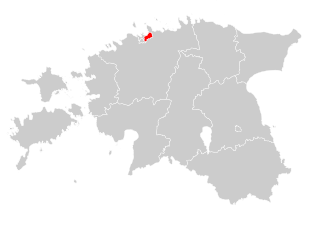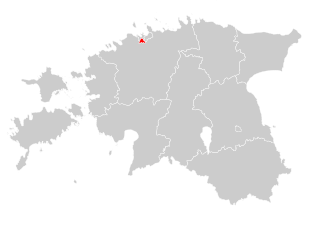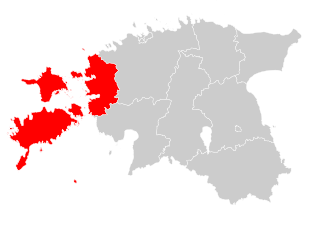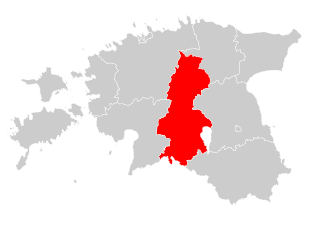Related Research Articles

Tartu is the second largest city in Estonia after Tallinn. Tartu has a population of 97,435. It is 186 kilometres southeast of Tallinn and 245 kilometres northeast of Riga, Latvia. Tartu lies on the Emajõgi river, which connects the two largest lakes in Estonia, Lake Võrtsjärv and Lake Peipus. From the 13th century until the end of the 19th century, Tartu was known in most of the world by variants of its historical name Dorpat.

The Estonia men's national football team represents Estonia in international football matches and is controlled by the Estonian Football Association, the governing body for football in Estonia. Estonia's home ground is Lilleküla Stadium in the capital city Tallinn.

Marko Kristal is an Estonian football manager and former player. He is the assistant manager of Nõmme Kalju.

Martin Reim is an Estonian football manager and former professional player.

Viljandi JK Tulevik, commonly known as Viljandi Tulevik, or simply as Tulevik, is an Estonian professional football club based in Viljandi that competes in the Esiliiga B, the third tier of Estonian football. The club's home ground is Viljandi linnastaadion.
The Estonian Athlete of the Year is an annual award presented by the Estonian Olympic Committee to one male and one female sportsperson judged to have delivered the best performance over the course of the year. The winners of the award, which was first conceived in the 1930s and has been presented every year since 1955, are chosen by an aggregated vote from sporting journalists, national sporting federations, and the public at large.
The 2013 Meistriliiga was the 23rd season of the Meistriliiga, the first level in the Estonian football system. The season began on 2 March 2013 and ended on 9 November 2013. Nõmme Kalju, the defending champions, finished runners-up behind Levadia, who won their 8th title.
The 2014 Meistriliiga, also known as A. Le Coq Premium Liiga due to sponsorship reasons, was the 24th season of the Meistriliiga, the first level in the Estonian football system. The season ran from 1 March 2014 to 8 November 2014. Levadia successfully defended the title, securing the championship in the last round.
The 2015 Meistriliiga, also known as A. Le Coq Premium Liiga for sponsorship reasons, was the 25th season of the Meistriliiga, the first level in the Estonian football system. The season started on 6 March 2015 and the final matchday took place on 7 November. Levadia, the defending champions, finished runner-up behind Flora, who won their tenth title.
The 2016 Meistriliiga was the 26th season of the Meistriliiga, the highest division of Estonian football system. The season began on 4 March 2016 and concluded on 5 November 2016.

Electoral district no. 1 is one of the 12 multi-member electoral districts of the Riigikogu, the national legislature of Estonia. The electoral district was established in 1995 following the re-organisation of the electoral districts in Tallinn. It is conterminous with the districts of Haabersti, Kristiine and Põhja-Tallinn in Tallinn. The district currently elects 10 of the 101 members of the Riigikogu using the open party-list proportional representation electoral system. At the 2019 parliamentary election it had 85,469 registered electors.

Electoral district no. 2 is one of the 12 multi-member electoral districts of the Riigikogu, the national legislature of Estonia. The electoral district was established in 1995 following the re-organisation of the electoral districts in Tallinn. It is conterminous with the districts of Kesklinn, Lasnamäe and Pirita in Tallinn. The district currently elects 13 of the 101 members of the Riigikogu using the open party-list proportional representation electoral system. At the 2019 parliamentary election it had 111,135 registered electors.

Electoral district no. 3 is one of the 12 multi-member electoral districts of the Riigikogu, the national legislature of Estonia. The electoral district was established in 1995 following the re-organisation of the electoral districts in Tallinn. It is conterminous with the districts of Mustamäe and Nõmme in Tallinn. The district currently elects eight of the 101 members of the Riigikogu using the open party-list proportional representation electoral system. At the 2019 parliamentary election it had 71,882 registered electors.

Electoral district no. 4 is one of the 12 multi-member electoral districts of the Riigikogu, the national legislature of Estonia. The district was established as electoral district no. 5 in 1992 when the Riigikogu was re-established following Estonia's independence from the Soviet Union. It was renamed electoral district no. 4 in 1995 following the re-organisation of electoral districts. It is conterminous with the counties of Harju and Rapla. The district currently elects 15 of the 101 members of the Riigikogu using the open party-list proportional representation electoral system. At the 2019 parliamentary election it had 133,437 registered electors.

Electoral district no. 5 is one of the 12 multi-member electoral districts of the Riigikogu, the national legislature of Estonia. The district was established as electoral district no. 6 in 1992 when the Riigikogu was re-established following Estonia's independence from the Soviet Union. It was renamed electoral district no. 5 in 1995 following the re-organisation of electoral districts. It is conterminous with the counties of Hiiu, Lääne and Saare. The district currently elects six of the 101 members of the Riigikogu using the open party-list proportional representation electoral system. At the 2019 parliamentary election it had 51,093 registered electors.

Electoral district no. 8 is one of the 12 multi-member electoral districts of the Riigikogu, the national legislature of Estonia. The district was established as electoral district no. 7 in 1995 following the re-organisation of electoral districts. It was renamed electoral district no. 8 in 2003 following another re-organisation of electoral districts. It is conterminous with the counties of Järva and Viljandi. The district currently elects seven of the 101 members of the Riigikogu using the open party-list proportional representation electoral system. At the 2019 parliamentary election it had 61,657 registered electors.

Electoral district no. 9 is one of the 12 multi-member electoral districts of the Riigikogu, the national legislature of Estonia. The district was established as electoral district no. 8 in 1995 following the re-organisation of electoral districts. It was renamed electoral district no. 9 in 2003 following another re-organisation of electoral districts. It is conterminous with the counties of Jõgeva and Tartu. The district currently elects seven of the 101 members of the Riigikogu using the open party-list proportional representation electoral system. At the 2019 parliamentary election it had 65,898 registered electors.

Electoral district no. 11 is one of the 12 multi-member electoral districts of the Riigikogu, the national legislature of Estonia. The district was established in 1992 when the Riigikogu was re-established following Estonia's independence from the Soviet Union. It was renamed electoral district no. 10 in 1995 following the re-organisation of electoral districts but reverted to electoral district no. 11 in 2003. It is conterminous with the counties of Põlva, Valga and Võru. The district currently elects eight of the 101 members of the Riigikogu using the open party-list proportional representation electoral system. At the 2019 parliamentary election it had 70,706 registered electors.

Hannes Walter was an Estonian war historian.
References
- ↑ Toomla, Jaan (1999). Valitud ja valitsenud: Eesti Parlamentaarsete ja muude esinduskogude ja valitsuste isikkoosseis aastail 1917–1999 (in Estonian). Tallinn: Estonian National Library. p. GIVENR. ISBN 9985921720 . Retrieved 6 March 2021.